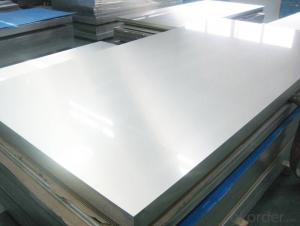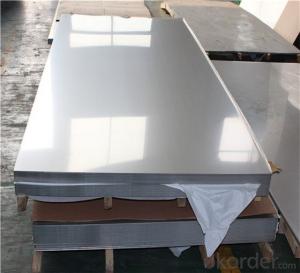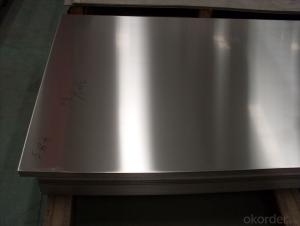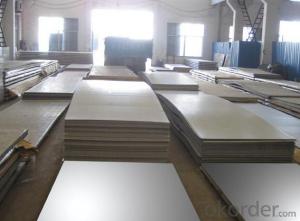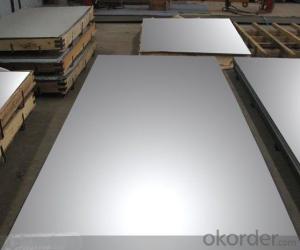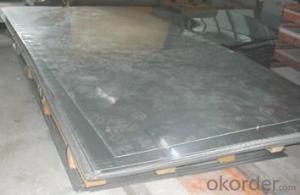Stainless Steel Sheet/Plate 440 with Highest Hardness
- Loading Port:
- Shanghai
- Payment Terms:
- TT or LC
- Min Order Qty:
- 1000 m.t.
- Supply Capability:
- 8500000 m.t./month
OKorder Service Pledge
OKorder Financial Service
You Might Also Like
Stainless Steel Sheet/Plate 440 with Highest Hardness
Description of Stainless Steel Sheet/Plate 440 with Highest Hardness:
Stainless steel is a production which not easy rust,acid resistance and corrosion resistance,so it is widelyused in light industry,heavy industry,daily necessities and the decoration industry.my company long-termsupply stainless steel porducts including:stainless steel sheet,stainless steel coil and stainless steel tube.
Main Features of Stainless Steel Sheet/Plate 440 with Highest Hardness:
•Escalator, Elevator, Doors
•Furniture
•Production tools, Kitchen appliances, freezers, cold rooms
•Auto Parts
•Machinery and Packaging
•Equipment and Medical devices
•Transport system
Application of Stainless Steel Sheet/Plate 440 with Highest Hardness:
Stainless steel’s resistance to corrosion and staining, low maintenance and familiar lustre make it an ideal material for many application
s.There are over 150 grades of stainless steel, of which fifteen are most commonly used. The alloy is milled into coils, sheets, plates,
bars, wire, and tubing to be used in cookware, cutlery, household hardware, surgical instruments, major appliances, industrial equipme
nt Storage tanks and tankers used to transport orange juice and other food are often made of stainless steel, because of its corrosion re
sistance and antibacterial properties. This also influences its use in commercial kitchens and food processing plants, as it can be steam
cleaned and sterilized and does not need paint or other surface finishes..
Specifications of Stainless Steel Sheet/Plate 440 with Highest Hardness:
Description | steel sheet,hot rolled steel sheet,cold rolled steel sheet, steel sheet,sheet,steel plate |
Standard | ASME, ASTM, EN ,BS,GB,DIN, JIS etc |
Application | Steel sheet applies to construction field, ships building industry, petroleum & chemical industries, war and electricity industries, food processing and medical industry, boiler heat exchanger, machinery and hardware fields. |
Packaging | Standard export sea-worthy packing |
Delivery time | 10-30 days |
Quality | No.1 |
Productivity | 500 tons/Day |
Note | Our company has cooperative relation between the domestic agents. Stainless steel sheet can be made accordingto the customers requirements. Fasten delivery. Quality assured. |
Contacts | If you have any question,please feel free contact me. |
Surface Finish Characteristics Stainless Steel Sheet/Plate 440 with Highest Hardness:
| Surface finish | Characteristics and application |
| 2B | The surface brightness and flatness of no2B is better than no2D. then through a special surface treatment to improve its mechanical properties,No2B could nearly satisfy comprehensive uses. |
| No.1 | Polished with abrasive belt of grit#100-#200, have better brightness with discontinuous coarse stria, used as inner and external ornaments for building, electrical appliances and kitchen utensils etc. |
| No.4 | Polished with abrasive belt of grit #150-#180,have better brightness with discontinuous coarse stria, but thinner than No3, are used as bathtub buildings inner and external ornaments electrical appliances kitchen utensils and food processing equipment etc. |
| HL | Polished with abrasive belt of grit #150-#320 on the NO.4 finish and has continuous streaks, mainly used as buildings ornaments elevators, door of building, frontal plate etc. |
| BA | Cold rolled, bright annealed and skin-passed, the product have excellent brightness and good reflexivity like mirror, kitchen apparatus, ornament etc. |
| 8K | The product have excellent brightness and prefer reflexivity can to be the mirror. |
Images of Stainless Steel Sheet/Plate 440 with Highest Hardness:
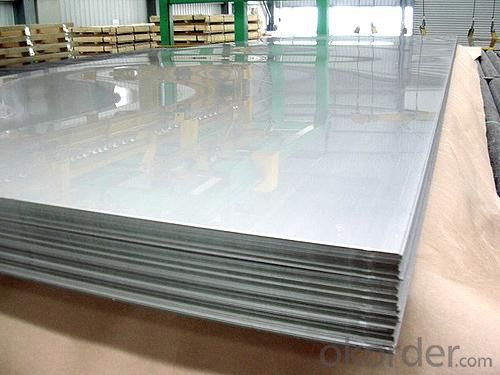
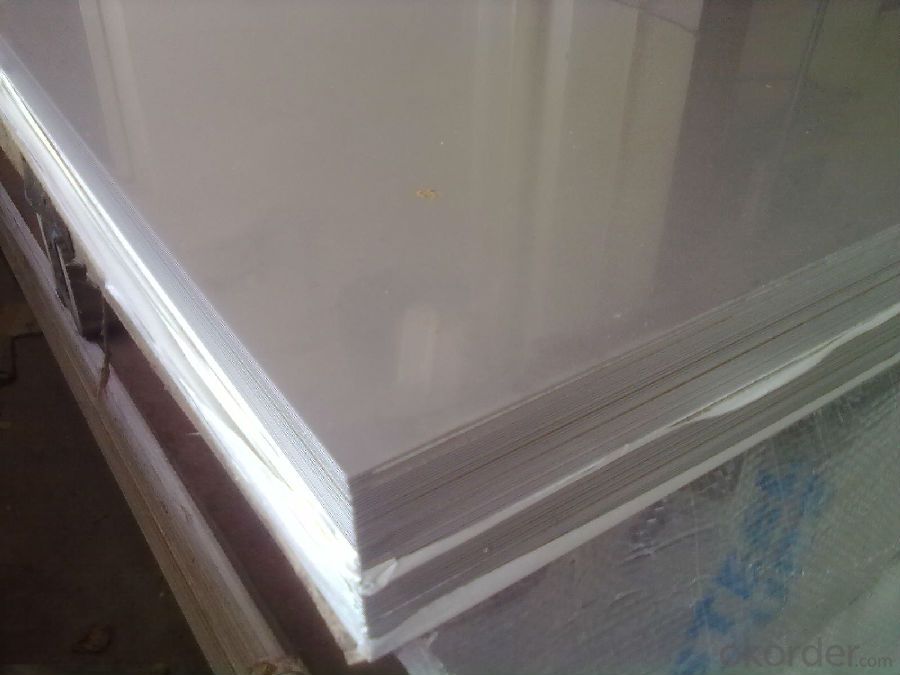
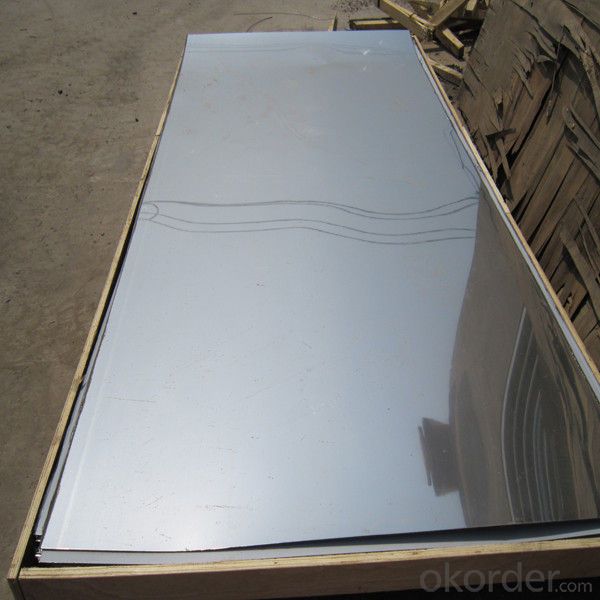
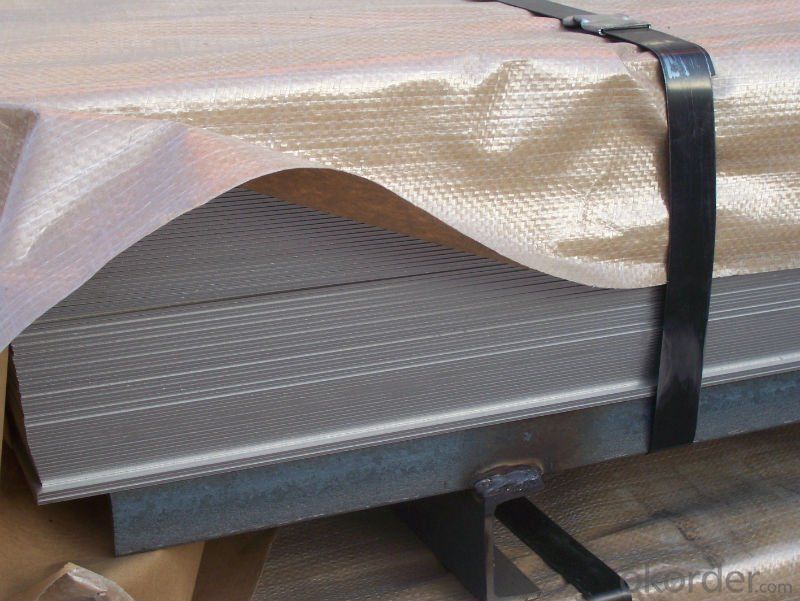
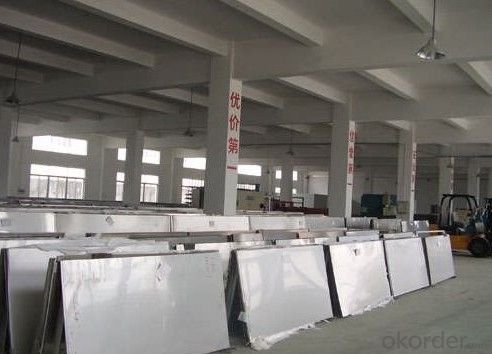
Sandard Seaworth Packing(wooden packing with water proof paper):
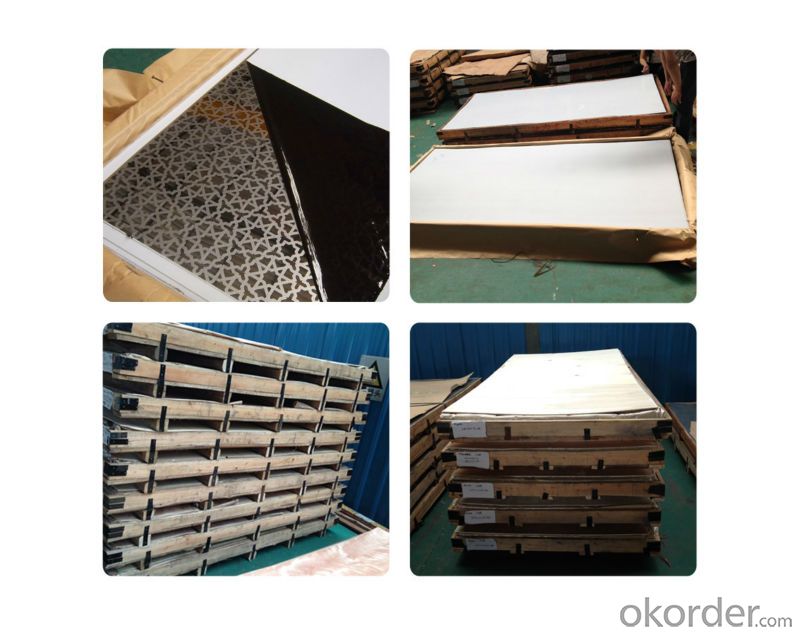
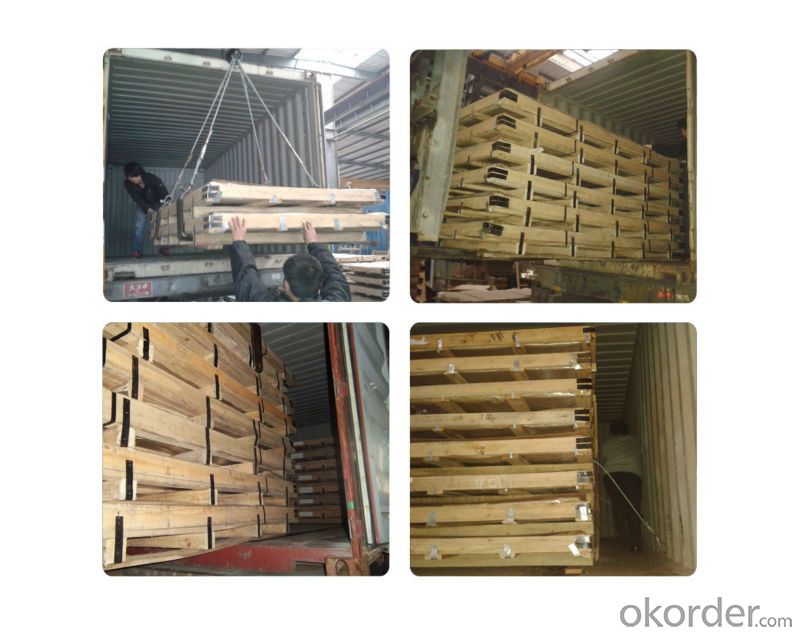
FAQ of Stainless Steel Sheet/Plate 440 with Highest Hardness:
1. What are we supplying?
We are specialized in producing stainless steel coil, stainless steel (plate/sheet), and duplex stainless steel for a prelonged period. We are currently supplying grade of steel of 201/202,304/304L, 310S/309S/316L/316Ti/321, 410/420/430/443/444/409L, and 904L.
2. How Many years experience do we have?
We have been exported to more than 20 countries in the past 15 years.
3. How long do we usually reply your request?
We always reply our customer within 24 hours.
If you have any question about stainless steel sheets,donot forget to sending the email to Us! You will get the competitive Price and have a very good experience about the Buying Process! CNBM International Corporation is always your trustful friend!
- Q:Can stainless steel sheets be used in the automotive industry?
- Yes, stainless steel sheets can be used in the automotive industry. Stainless steel is often used in the construction of automotive parts due to its exceptional strength, durability, and resistance to corrosion. It is commonly used in the production of components such as exhaust systems, fuel tanks, bumpers, and trim. Stainless steel sheets offer a high degree of flexibility in terms of design possibilities, allowing manufacturers to create complex shapes and structures. Additionally, stainless steel's aesthetic appeal and ease of maintenance make it a popular choice in the automotive industry.
- Q:Can stainless steel sheets be used for railway infrastructure?
- Yes, stainless steel sheets can be used for railway infrastructure. Stainless steel is known for its durability, corrosion resistance, and strength, making it suitable for various applications in the railway industry. It can be used for railway tracks, bridges, platforms, and other structures that require high strength and long-lasting performance. Additionally, stainless steel's low maintenance requirements and ability to withstand harsh environmental conditions make it an ideal choice for railway infrastructure.
- Q:Can stainless steel sheets be used for filtration applications?
- Yes, stainless steel sheets can be used for filtration applications. Stainless steel is known for its corrosion resistance and durability, making it an excellent choice for filtration systems. The sheets can be formed into various filter elements, such as screens, discs, or cartridges, to suit different filtration needs. Stainless steel sheets offer high mechanical strength, allowing them to withstand high pressures and temperatures without deformation. Additionally, stainless steel can be easily cleaned and sanitized, making it suitable for applications where hygiene is crucial, such as in the food and beverage industry. Overall, stainless steel sheets are widely used in filtration applications due to their excellent performance and reliability.
- Q:Are stainless steel sheets good for pressure piping?
- Yes, stainless steel sheets are excellent for pressure piping due to their high strength, corrosion resistance, and ability to withstand extreme temperatures.
- Q:How do you install stainless steel sheets?
- To install stainless steel sheets, you will need a few basic tools and follow these steps: 1. Measure and prepare: Start by measuring the area where you want to install the stainless steel sheets. Ensure that the surface is clean, dry, and free from any dust or debris. If needed, sand down any rough spots or imperfections on the surface. 2. Cut the sheets: Using a metal cutting tool like a circular saw or a jigsaw with a metal cutting blade, cut the stainless steel sheets to the desired size and shape. Make sure to wear safety goggles and gloves while cutting to protect yourself. 3. Apply adhesive: Apply a high-strength construction adhesive to the backside of the stainless steel sheet. Make sure to apply the adhesive evenly, leaving no gaps or air pockets. You can also use a notched trowel to spread the adhesive for better coverage. 4. Position and secure: Carefully place the stainless steel sheet onto the prepared surface, making sure to align it properly. Apply gentle and even pressure to ensure the sheet adheres to the surface. You can use a roller or a clean cloth to press the sheet firmly onto the surface. 5. Secure with screws: If necessary, use stainless steel screws to secure the sheet further. Place the screws along the edges and corners, ensuring they are evenly spaced. Make sure not to overtighten the screws to avoid damaging the sheet. 6. Trim and finish: If any excess stainless steel sheet is hanging over the edges, use a metal cutting tool to trim it down to the desired size. Once trimmed, smooth out any rough edges using a file or sandpaper. You can also use a stainless steel cleaner to remove any smudges or fingerprints and give it a polished finish. Remember to always follow the manufacturer's instructions for the specific stainless steel sheets you are using, as installation methods may vary slightly. Additionally, it is recommended to seek professional assistance if you are unsure or not comfortable with the installation process.
- Q:What is the thickness range of stainless steel sheets?
- The thickness range of stainless steel sheets can vary, but it typically falls between 0.4mm to 6mm.
- Q:Lead and stainless steel plate welding together? How do you solder it?
- Lead and stainless steel, two different metal elements. Although the welding process is difficult, it can still be welded together.
- Q:How do you remove water stains from stainless steel sheets?
- To remove water stains from stainless steel sheets, you can follow these steps: 1. Start by wiping the surface of the stainless steel sheet with a soft, damp cloth to remove any loose dirt or debris. 2. Mix a solution of warm water and mild dish soap in a bucket or bowl. Dip a clean cloth into the soapy water and wring out any excess liquid. 3. Gently rub the cloth over the water stains on the stainless steel sheet. Make sure to go along the grain of the stainless steel to prevent any further damage or scratching. 4. For tougher water stains, you can use a non-abrasive cleaner specifically designed for stainless steel. Apply a small amount of the cleaner to a clean cloth and gently rub it onto the stained areas. 5. Rinse the stainless steel sheet with clean water to remove any soap residue. Use a separate clean cloth or sponge to wipe away any excess water. 6. To prevent future water stains, you can apply a stainless steel cleaner or polish to the surface. Follow the instructions on the product label for the best results. Remember to always test any cleaning solution or product on a small, inconspicuous area of the stainless steel sheet before applying it to the entire surface. This will ensure that the cleaner or polish does not cause any damage or discoloration.
- Q:What are the different types of stainless steel sheet surface patterns for architectural purposes?
- There are several different types of stainless steel sheet surface patterns that are commonly used for architectural purposes. These patterns are created by altering the surface of the stainless steel sheet through various techniques. Some of the most popular types of surface patterns include: 1. Brushed: This is a common surface pattern that is created by brushing the stainless steel sheet with a fine abrasive material. It creates a smooth and uniform texture with visible brush lines running in one direction. Brushed stainless steel is often used for its sleek and contemporary appearance. 2. Mirror: As the name suggests, mirror stainless steel has a highly reflective surface that resembles a mirror. This surface pattern is achieved by polishing the stainless steel sheet to a high shine. Mirror stainless steel is commonly used in applications where aesthetics and visual impact are important. 3. Embossed: Embossed stainless steel sheets have a raised pattern or design on the surface. This pattern is created by pressing the stainless steel sheet between rollers that have a specific design or pattern engraved on them. Embossed stainless steel adds texture and depth to architectural applications. 4. Perforated: Perforated stainless steel sheets have small holes or perforations evenly distributed across the surface. These perforations can be in various shapes and sizes, allowing for airflow, light transmission, and decorative effects. Perforated stainless steel sheets are commonly used for façades, screens, and decorative elements. 5. Etched: Etched stainless steel sheets have designs or patterns chemically etched into the surface. This is achieved by applying an acid-resistant material to the stainless steel and then selectively removing the unprotected areas with acid. Etched stainless steel sheets can create intricate and detailed designs, making them ideal for artistic and decorative applications. 6. Hammered: Hammered stainless steel sheets have a textured surface that resembles hammered metal. This pattern is achieved by using a special hammer or mallet to create indentations and surface irregularities. Hammered stainless steel sheets add a rustic and handcrafted look to architectural projects. These are just a few examples of the different types of stainless steel sheet surface patterns that are commonly used for architectural purposes. Each pattern offers its own unique visual and textural qualities, allowing designers and architects to choose the most suitable option for their specific project needs.
- Q:How do you prevent chloride-induced corrosion in stainless steel sheets?
- To prevent chloride-induced corrosion in stainless steel sheets, there are several measures that can be taken: 1. Material selection: Choosing the right grade of stainless steel that is resistant to chloride corrosion is crucial. Grades such as 316 or 317 are particularly effective in resisting chloride attack. 2. Surface treatment: Applying a passivation treatment to the stainless steel sheets can help enhance their resistance to chloride-induced corrosion. Passivation removes any surface iron contamination that may have occurred during fabrication, restoring the protective oxide layer. 3. Proper cleaning: Regular cleaning of the stainless steel sheets is essential to remove any chloride-containing contaminants that may have built up on the surface. Chloride ions can accumulate from saltwater, cleaning products, or other sources, so it is important to maintain a clean surface. 4. Avoid contact with chloride-containing substances: Minimizing exposure to chloride-containing substances can greatly reduce the risk of corrosion. This includes avoiding direct contact with saltwater, chloride-based cleaning agents, and chloride-rich environments such as swimming pools or coastal areas. 5. Design considerations: In environments where chloride exposure is expected, proper design considerations can help prevent corrosion. This may involve using protective coatings, minimizing crevices or gaps where chlorides can accumulate, and ensuring proper drainage to avoid stagnant conditions. 6. Regular maintenance: Regular inspections and maintenance of the stainless steel sheets can help identify and address any potential corrosion issues before they become severe. This may include repairing any surface damage, reapplying passivation treatments if necessary, and maintaining a clean surface. By following these preventive measures, the risk of chloride-induced corrosion in stainless steel sheets can be significantly reduced, ensuring their long-term durability and performance.
1. Manufacturer Overview |
|
|---|---|
| Location | |
| Year Established | |
| Annual Output Value | |
| Main Markets | |
| Company Certifications | |
2. Manufacturer Certificates |
|
|---|---|
| a) Certification Name | |
| Range | |
| Reference | |
| Validity Period | |
3. Manufacturer Capability |
|
|---|---|
| a)Trade Capacity | |
| Nearest Port | |
| Export Percentage | |
| No.of Employees in Trade Department | |
| Language Spoken: | |
| b)Factory Information | |
| Factory Size: | |
| No. of Production Lines | |
| Contract Manufacturing | |
| Product Price Range | |
Send your message to us
Stainless Steel Sheet/Plate 440 with Highest Hardness
- Loading Port:
- Shanghai
- Payment Terms:
- TT or LC
- Min Order Qty:
- 1000 m.t.
- Supply Capability:
- 8500000 m.t./month
OKorder Service Pledge
OKorder Financial Service
Similar products
New products
Hot products
Hot Searches
Related keywords

